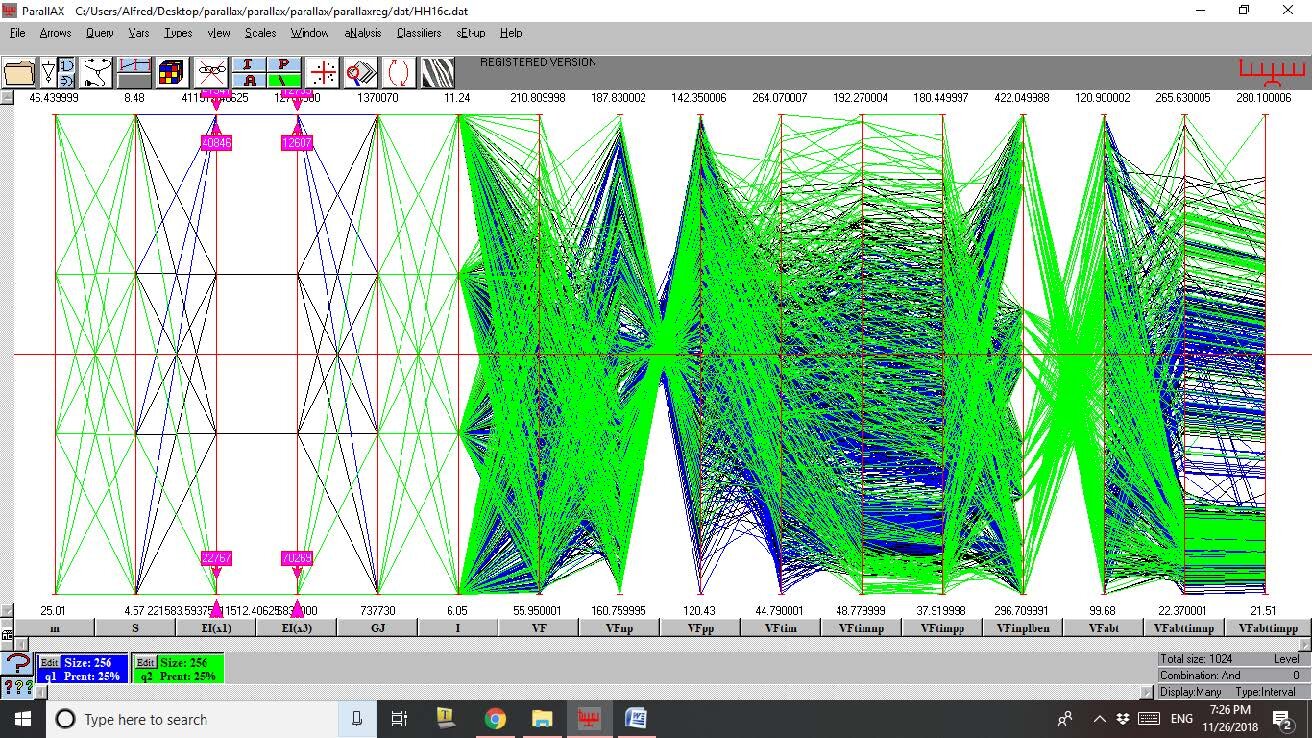
Bending, buckling, twisting, and plunging are just a few of the ways vehicles perform when in flight. Rather than analyzing these and more variables individually, aerospace engineers used a system-of-systems approach to mathematically model the stresses for a big-picture understanding of what's happening to a portion of a vehicle (a spar) in flight—then used a unique protocol to visualize all of the variables together.
"Simply put, if you apply a load, such as lift and drag, to a wing spar it will bend and twist. If applied at a unique point, called a shear center, where it doesn't twist. At supersonic speeds, that spar is subjected to higher than normal temperatures and it can begin to exhibit viscoelastic properties while the shear center point moves in time," said Harry H. Hilton, a professor emeritus in the Department of Aerospace Engineering in the Grainger College of Engineering at the University of Illinois at Urbana-Champaign.
"If we build a supersonic vehicle with aluminum, it won't survive the heat and will fail. But if we use a different material, like tungsten, the spar can withstand higher temperatures in flight and delay failure," he said. "As scientists are able to fly vehicles at greater and greater speeds, we need to develop new materials and we need to understand what happens at every point of the vehicle structure while being subjected to many variables."
Hilton conducted a research project with the final goal being to establish conditions with 16 different variables that can lead to material failures and structural instabilities. His undergraduate and intern students did the computational work. Hilton provided the analysis.
At that stage, Hilton searched for a way to visualize the complex results.
"People are familiar with Excel spreadsheets that have so many columns, you can't see it all at once, and you can't even print it all out to look at it," Hilton said. "There is so much that it becomes unwieldy to make visual use of the results."
Hilton said he remembered seeing a research paper and book by Alfred Inselberg, a professor of mathematics at Tel Aviv University, who rigorously developed a radical way to visualize a multidimensional dataset.
Inselberg actually earned a B.S. in 1958 in aerospace engineering from the University of Illinois—within Hilton's first decade at Illinois—as well as later an M.S. and Ph.D. in mathematics from Illinois. The two hadn't crossed paths since 1958, but now became collaborators.
"Inselberg developed a way to render a multidimensional view of the data on a flat surface," Hilton said.
Hilton explained the problem by describing human limitations in depicting more than three dimensions.
Cave drawings by early man and even first century Egyptian images, depict two dimensional humans and animals standing on a single plane. It wasn't until 1415 that Florentine architect Fillipo Brunelleshi drew a structure using three-point linear perspective.
"In terms of visualization of multiple dimensions, once you get past three, it's immaterial," Hilton said. "In graphs, we might have three axes showing three dimensions, but in this research there can be more than 16. Using Inselberg's technique, you can visualize more than that—even hundreds or more dimensions."
Hilton used the example of how Earth is represented on a sphere. "Greenland is huge. But you can also try to put it on a sheet of paper and the globe becomes slices or a projected view. The problem with doing that is you either have the directions correct or you have the size correct and never both. Whereas, with mathematical modeling, you can do it. And Inselberg figured out a way to do it."
According to Hilton, Inselberg's visualization is difficult at first. There is a lot of data close together. It helps to change the scale of the output and look at smaller portions, much like expanding an audio file of a voice on a computer to isolate and delete an um.
"At the same time, this is very useful," he said. "It takes hours to understand it, but once you do, you can see your way through. This is the kind of tool for analysis that theoretical mathematicians, physicists, and engineers can use."
The 2019 study, "Combined Linear Aeroelastic and Aero-viscoelastic Effects in da Vinci—Euler—Bernoulli and Timoshenko Beams (Spars) with Random Properties, Loads and Physical Starting Transients, and with Moving Shear Centers and Neutral Axes. Part I: Theoretical modeling and analysis," is published in Mathematics in Engineering, Science and Aerospace (MESA) and was written by Harry H. Hilton, Alfred Inselberg, Theo H.P. Nguyen, and Sijian Tan.
More information: Combined linear aeroelastic and aero-viscoelastic effects in da Vinci-Euler-Bernoulli and Timoshenko beams (Spars) with random properties, loads and physical starting transients, and with moving shear centers and neutral axes. Part I: Theoretical modeling and analysis. Mathematics in Engineering, Science & Aerospace (MESA) . 2019, nonlinearstudies.com/index.php … sa/article/view/1861
Citation: Visualizing multiple dimensions for big-picture analysis of wing stresses and performance (2019, November 27) retrieved 27 November 2019 from https://techxplore.com/news/2019-11-visualizing-multiple-dimensions-big-picture-analysis.html
This document is subject to copyright. Apart from any fair dealing for the purpose of private study or research, no part may be reproduced without the written permission. The content is provided for information purposes only.
